Medusa's Head: From Greek Myth to Caltagirone Ceramics
The figure of Medusa is one of the most fascinating in Greek mythology . Along with Stheno and Euryale, she is one of the three Gorgons, mythological creatures with the power to petrify anyone who meets their gaze.
In this article, we will explore how the head of Medusa made its way from Greek mythology to artistic representations in Caltagirone ceramics , a Sicilian artisan tradition renowned for its beauty and craftsmanship.
The Myth of Medusa in Greek Mythology
The myth of Medusa has its roots in ancient Greece, where she was considered one of the Gorgons. Medusa was the only mortal of the three sisters, a fact that made her particularly interesting and dangerous in the eyes of the ancient Greeks.
The Origins of Medusa and the Gorgons
Medusa and her sisters, Stheno and Euryale, were daughters of Phorcys and Ceto , primordial sea deities. Their descent from sea deities made them powerful and feared creatures.
The Power of the Petrifying Gaze
One of Medusa's most famous traits was her petrifying gaze , capable of turning anyone who crossed her path to stone. This lethal power made her a feared and respected figure in ancient times.
Medusa as Daughter of the Sea Gods
Her connection to marine deities emphasized her monstrous nature and her ability to inspire terror. The depiction of Medusa with snakes for hair added a further element of terror and fascination.
| Characteristics | Description | Meaning |
| Petrifying Gaze | It turns anyone who crosses it into stone. | Lethal and feared power |
| Snakes in the Hair | It symbolizes terror and fascination | Adds an element of monstrosity |
| Marine descent | Daughter of Phorcys and Ceto | Grants power and monstrous nature |
Medusa was the only one of the Gorgons not to be immortal and was beheaded by Perseus , an event that marks a turning point in her mythological history.
The Legend of Perseus and the Beheading of Medusa
In Greek mythology , the legend of Perseus and Medusa represents a combination of courage and cunning. Perseus , aided by the gods, managed to defeat the fearsome Gorgon .
The Mythic Clash between the Hero and the Gorgon
The clash between Perseus and Medusa was an epic event in Greek mythology . Perseus, equipped with a reflective shield, avoided Medusa's petrifying gaze and beheaded her with a precise blow.
Perseus' Cunning and the Reflecting Shield
Perseus's cunning played a crucial role in his victory. Using his shield as a mirror, he could observe Medusa without looking directly into her stone eyes , thus avoiding being petrified.
The Power of the Severed Head as a Weapon
Medusa's severed head became a formidable weapon in the hands of Perseus. Used to petrify his enemies, it was a symbol of power from ancient myths .
Perseus, thanks to his victory over Medusa, became a legendary hero in Greek mythology, symbolizing the triumph of intelligence and courage over mythical conflict .
The Meaning and Symbolism of the Medusa Head
The head of Medusa is one of the most intriguing and complex symbols in Greek mythology, with a meaning that has evolved significantly over the centuries. This richly charged symbol has fascinated artists, historians, and mythology enthusiasts for centuries.
The Apotropaic and Protective Value
Medusa's head is often used as an apotropaic symbol, meaning to protect against evil and evil spirits. This use stems from the belief that Medusa's gaze could petrify her enemies, making her a powerful talisman against negative forces.
The use of Medusa's head as a protective symbol is documented in various ancient artworks and artifacts, demonstrating its importance in the culture and religion of the time.
Representations in Classical Art
In classical art, Medusa is frequently depicted with snakes for hair, symbolizing her power and monstrous nature. These depictions not only highlighted her ability to inspire fear but also her complexity as a mythological figure.
Artworks depicting Medusa are numerous, ranging from sculptures to paintings, each offering a unique perspective on her symbolism and cultural significance.
Evolution of the Symbol through the Centuries
Over the centuries, the symbol of Medusa has undergone numerous transformations, adapting to the cultural and artistic contexts of different eras. From its origins in Greek mythology to its representations in modern art, Medusa remains a subject of great interest and fascination.
This evolution demonstrates the versatility and depth of the Medusa symbol, which continues to inspire artists and capture the public's imagination.
The Ceramic Tradition of Caltagirone
Caltagirone ceramics represent one of Sicily's most renowned artisanal traditions. For centuries, this city has been an important center for the production of high-quality ceramics, prized not only in Italy but throughout the world.

History and Origins of Sicilian Craftsmanship
Sicilian craftsmanship, and Caltagirone ceramics in particular, has a history that dates back many centuries. The origins of this tradition are linked to the presence of high-quality clay deposits in the area, which allowed the development of excellent ceramic production.
The production techniques have been passed down from generation to generation, with local artisans continually honing their skills over the years. This has allowed Caltagirone ceramics to maintain a level of quality and originality that sets them apart from other productions.
Processing Techniques and Characteristic Styles
Ceramics production in Caltagirone is characterized by unique styles and decorations that reflect the rich history and culture of the area. Local artisans use traditional techniques to create one-of-a-kind pieces, ranging from geometric decorations to mythological subjects.
Processing Techniques:
- Clay modeling
- Hand decoration
- Baking in the oven
The Cultural Heritage of Calatina Ceramics
Caltagirone ceramics are considered an important cultural heritage of Sicily. Not only do they represent a high-quality artisan tradition, but they are also a symbol of the region's history and identity.
| Year | Event | Description |
| 18th century | Introduction of new techniques | The artisans of Caltagirone began to use new decoration techniques imported from abroad. |
| 19th century | Production expansion | Ceramic production in Caltagirone increased significantly, making the city famous throughout Italy. |
| 20th century | Preservation of tradition | Local artisans work to keep Caltagirone's ceramic tradition alive. |
Caltagirone ceramics continue to be a symbol of artisanal excellence and an important part of Sicily's cultural heritage . Its beauty and quality are the result of centuries of tradition and dedication.
The Medusa Head in Sofia Ceramics Creations
Ceramiche Sofia brings the Greek myth of Medusa to life through its extraordinary ceramic creations. The works of art produced by Ceramiche Sofia are the result of masterful craftsmanship passed down through generations.
The Artistic Interpretation of the Greek Myth
The artisans at Ceramiche Sofia reinterpret the head of Medusa with an artistic twist that combines tradition and innovation. Each piece is unique and tells the story of Medusa through different shapes and colors .
Variety of Sizes and Styles Available
Ceramiche Sofia offers a range of Medusa heads in various sizes and styles, suitable for every decor and personal taste. The small decorative heads are perfect for displaying on shelves or mantelpieces, adding a touch of elegance and mystery to any space. The large wall pieces are true works of art that capture the eye and become the center of attention in any room.
The Artisanal Production Process
The process of creating the Medusa heads is entirely handmade. The artisans at Ceramiche Sofia work with dedication and passion, shaping and decorating each piece with meticulous care.
Attention to detail and craftsmanship ensure that each work is unique and of high quality.
Distinctive Features of the Medusa Heads of Caltagirone
The Medusa heads of Caltagirone are an example of how art and mythology can harmoniously blend. These works of art are known for their beauty and intricate details, reflecting the rich artisanal tradition of the area.
Typical Colors and Decorations
The Medusa heads produced in Caltagirone are characterized by vibrant colors and intricate decorations that add a touch of drama and beauty to these works of art. The colors used are often inspired by nature and Sicilian culture, creating a strong connection between art and the land.
The Expressiveness of Faces and Snakes
The expressiveness of the faces and snakes adorning the Medusa heads is a distinctive feature of these handcrafted creations. The skill of local artisans in shaping and decorating the Medusa heads gives each piece its own unique personality.
The Marriage of Mythological Tradition and Local Art
The combination of mythological tradition and local art makes each piece unique and an example of artisanal excellence. The head of Medusa, a symbol of Greek mythology, finds an artistic representation in Caltagirone ceramics that is both traditional and innovative.
The figure of Medusa continues to inspire contemporary art with her timeless allure . From Greek mythology to the ceramics of Caltagirone, Medusa represents a symbol of power, protection, and beauty.
The enduring allure of Medusa is evidenced by her presence in various art forms, from classical works to the modern creations of Ceramiche Sofia. Her story and meaning continue to capture the imagination of artists and the public, ensuring that her myth lives on forever in contemporary art.
The representation of Medusa in Caltagirone ceramics is an example of how ancient myths can be reinterpreted in a modern key, keeping Sicilian cultural and artistic traditions alive.
FAQ
Who was Medusa in Greek mythology?
Medusa was one of the three Gorgons, daughters of the sea deities Phorcys and Ceto. She was the only mortal of the three sisters and had the power to petrify anyone who met her gaze.
How was Medusa beheaded?
Medusa was beheaded by Perseus, who used a reflective shield to avoid her petrifying gaze. Medusa's head became a powerful weapon in Perseus's hands.
What is the meaning of the head of Medusa?
Medusa's head is often used as an apotropaic symbol to protect against evil and evil spirits. It also represents power and protection.
How is Medusa depicted in classical art?
In classical representations, Medusa is often depicted with snakes instead of hair, symbolizing her power and monstrous nature.
What is the history of Caltagirone's ceramic tradition?
Caltagirone's ceramic tradition dates back centuries and is known for its creativity and manufacturing techniques passed down from generation to generation.
How are Medusa heads made in Caltagirone ceramics?
Medusa heads are handcrafted using traditional artisan techniques and are available in various sizes and styles.
What are the distinctive features of the Medusa heads of Caltagirone?
The Medusa heads of Caltagirone are characterized by bright colors and intricate decorations that reflect the rich artisan tradition of the area.
Why does the figure of Medusa continue to inspire contemporary art?
The figure of Medusa represents a symbol of power, protection, and beauty, and her story and meaning continue to capture the imagination of artists and audiences.
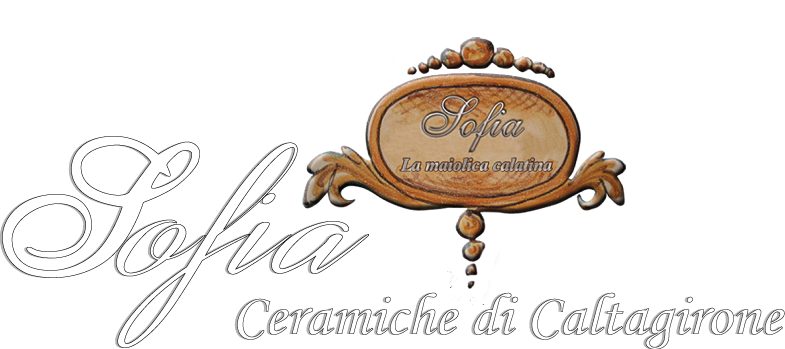
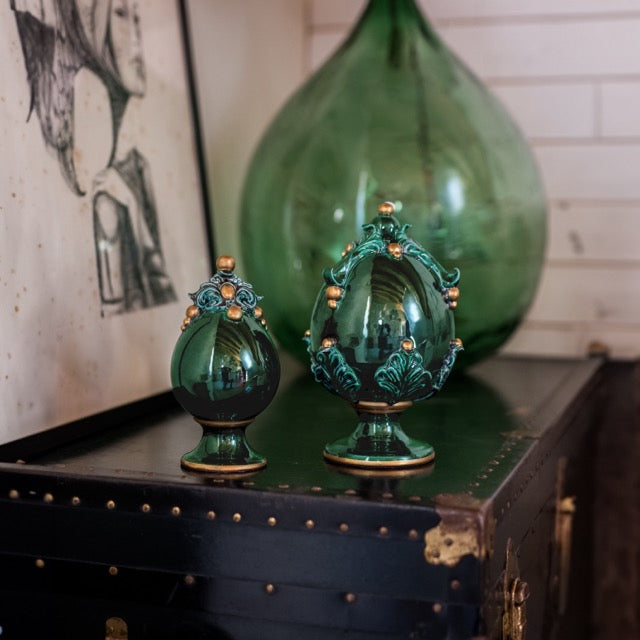
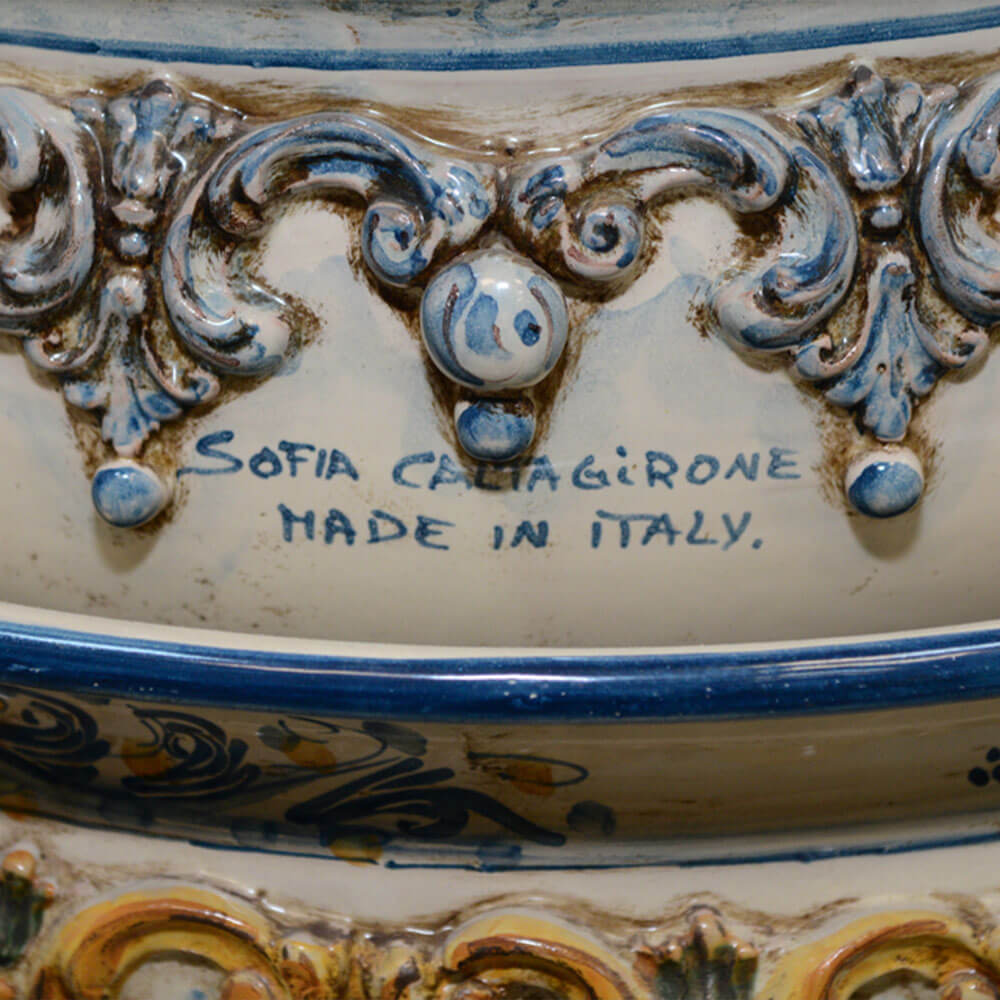

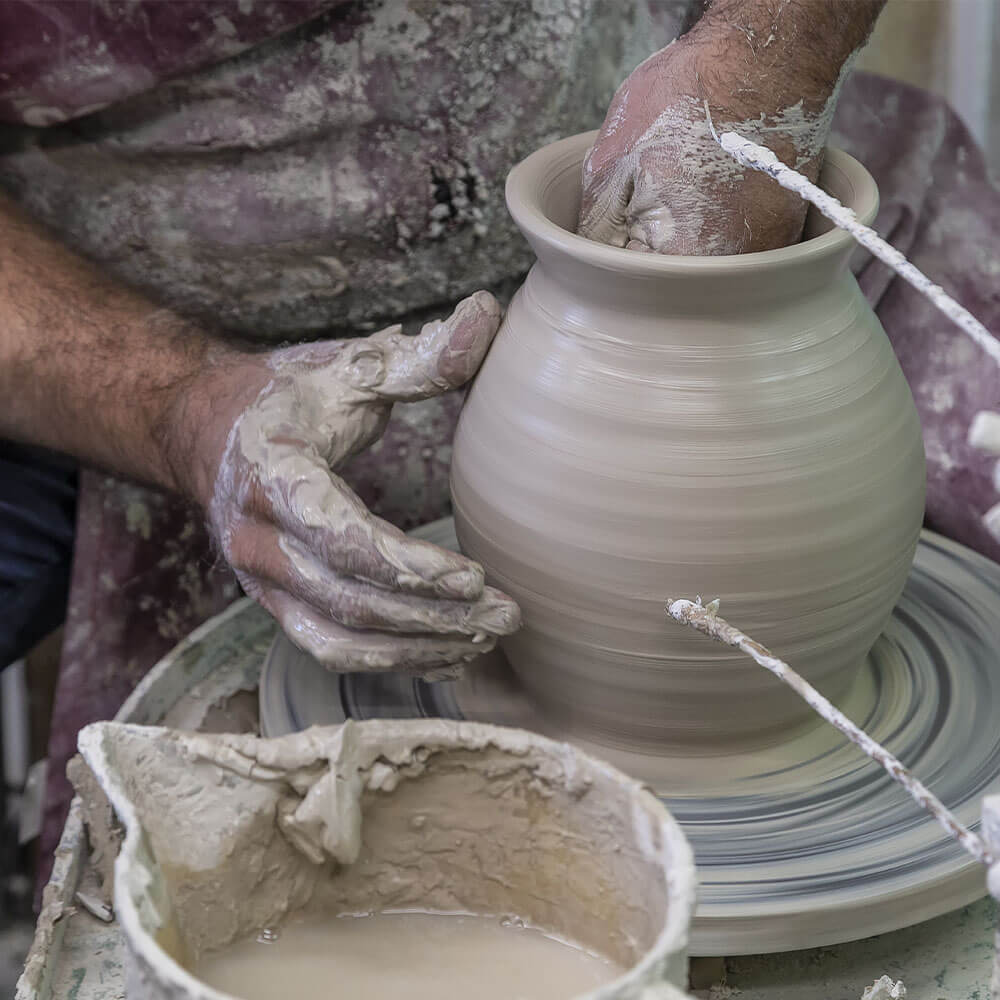
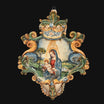
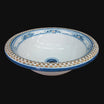

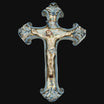
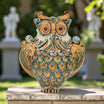
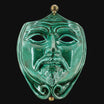
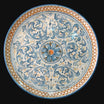

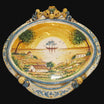
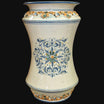
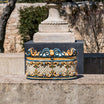
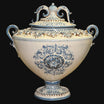
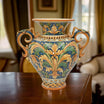
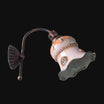

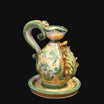



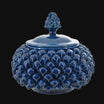

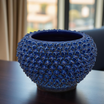
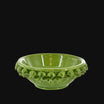

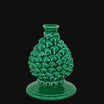


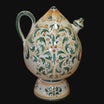




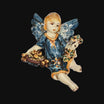



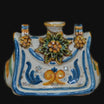
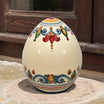
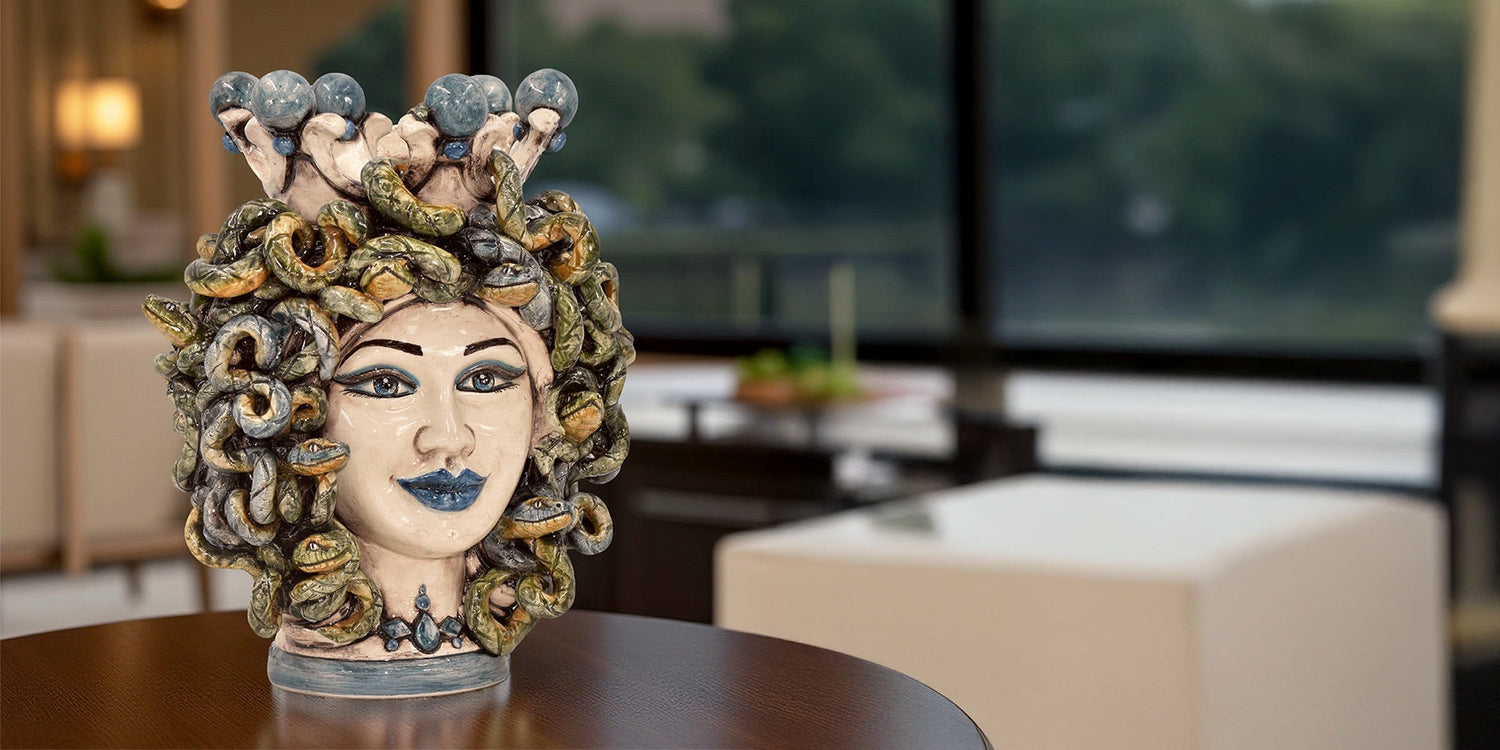










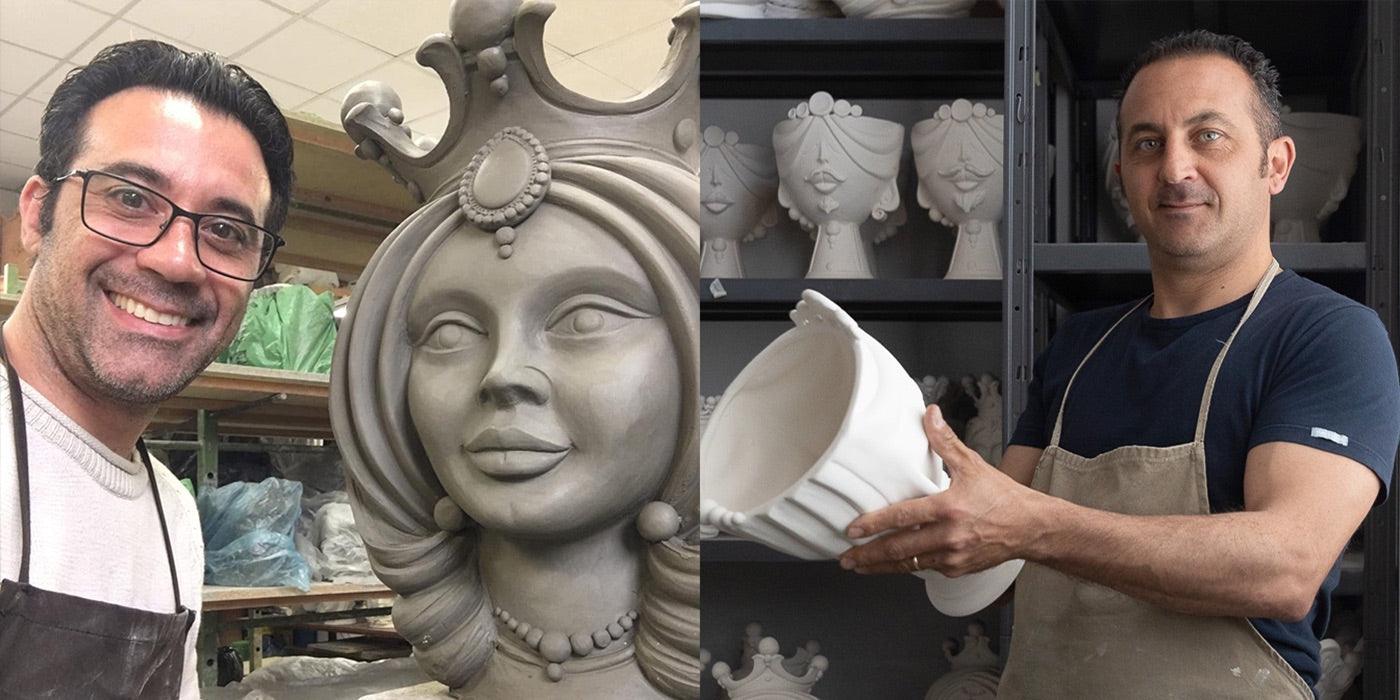

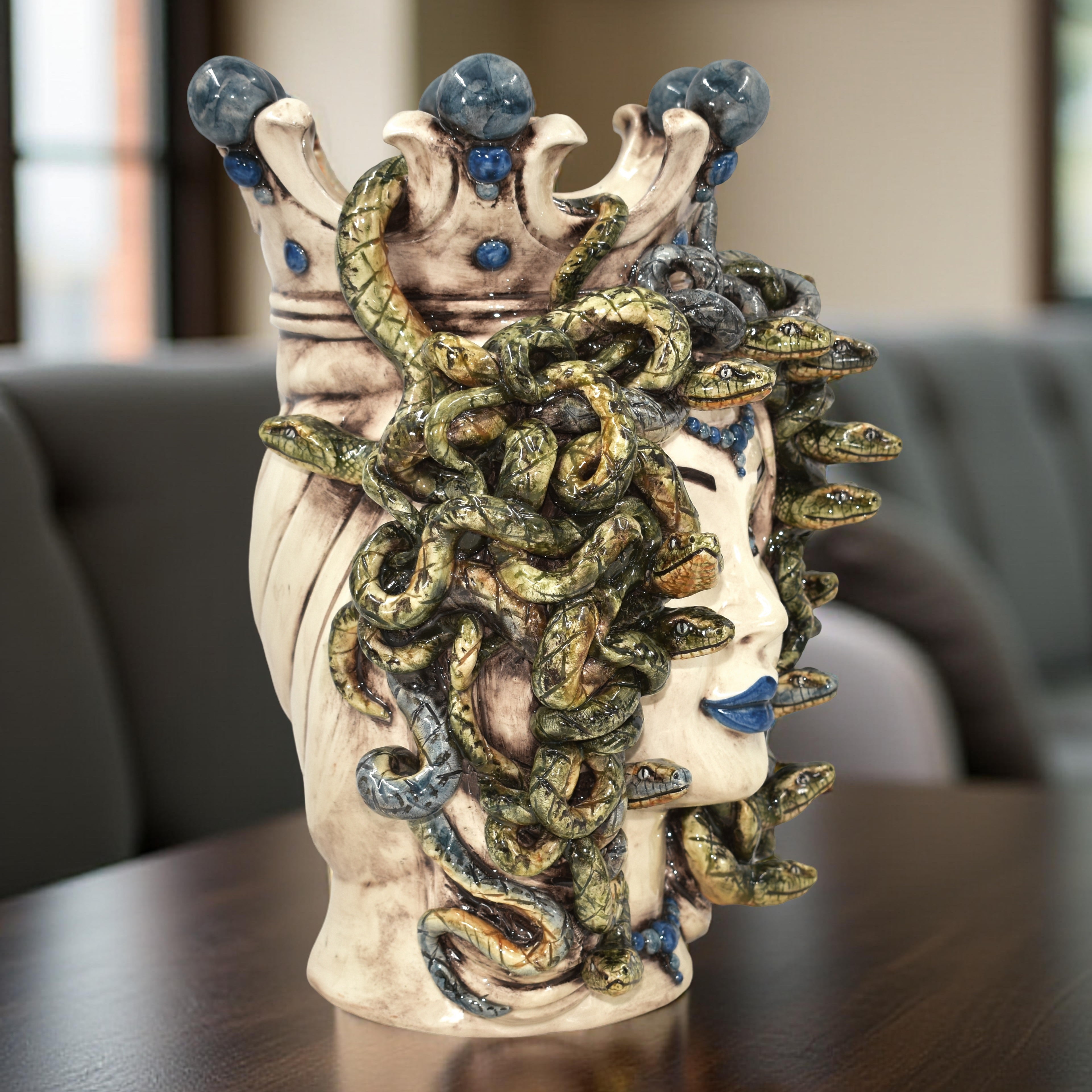
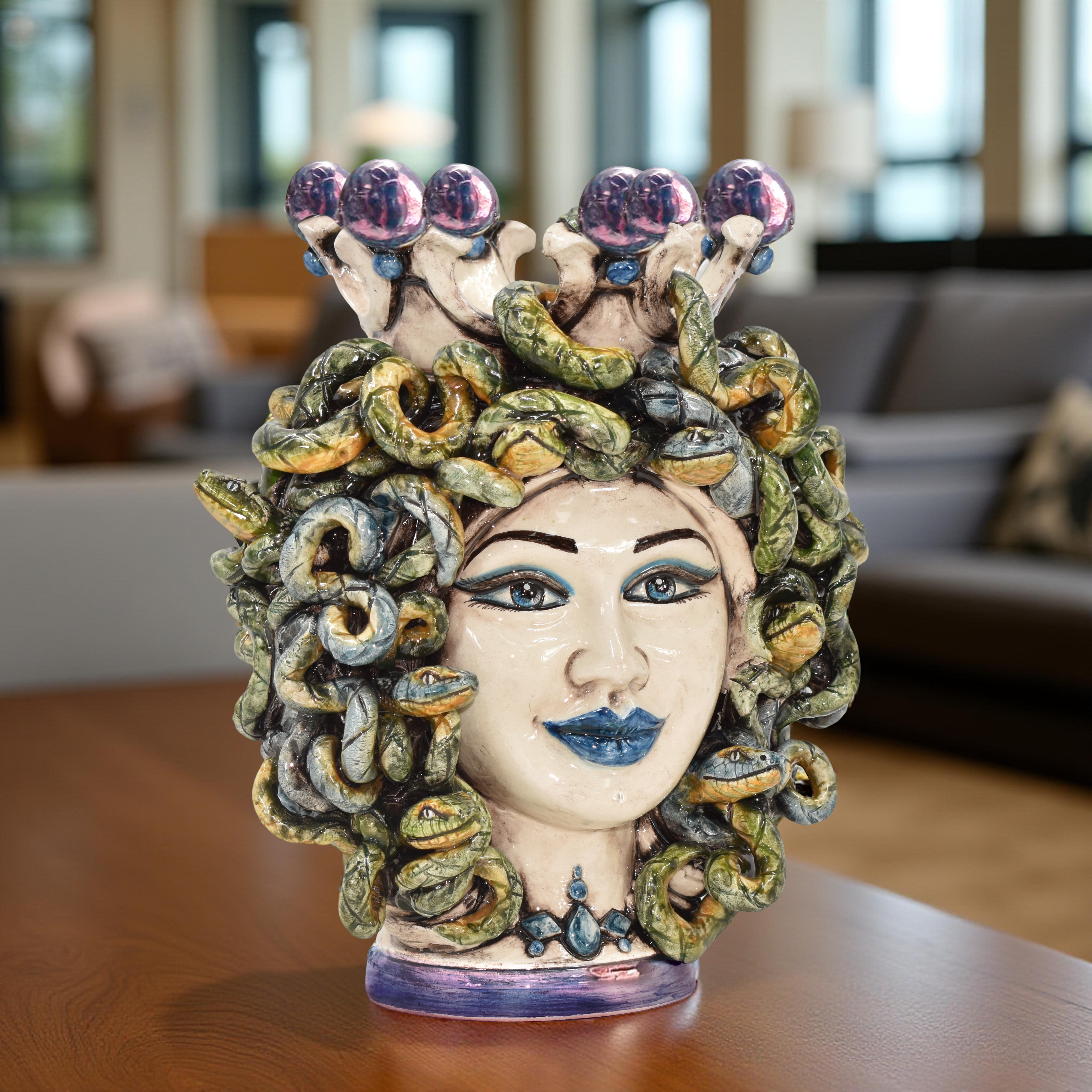
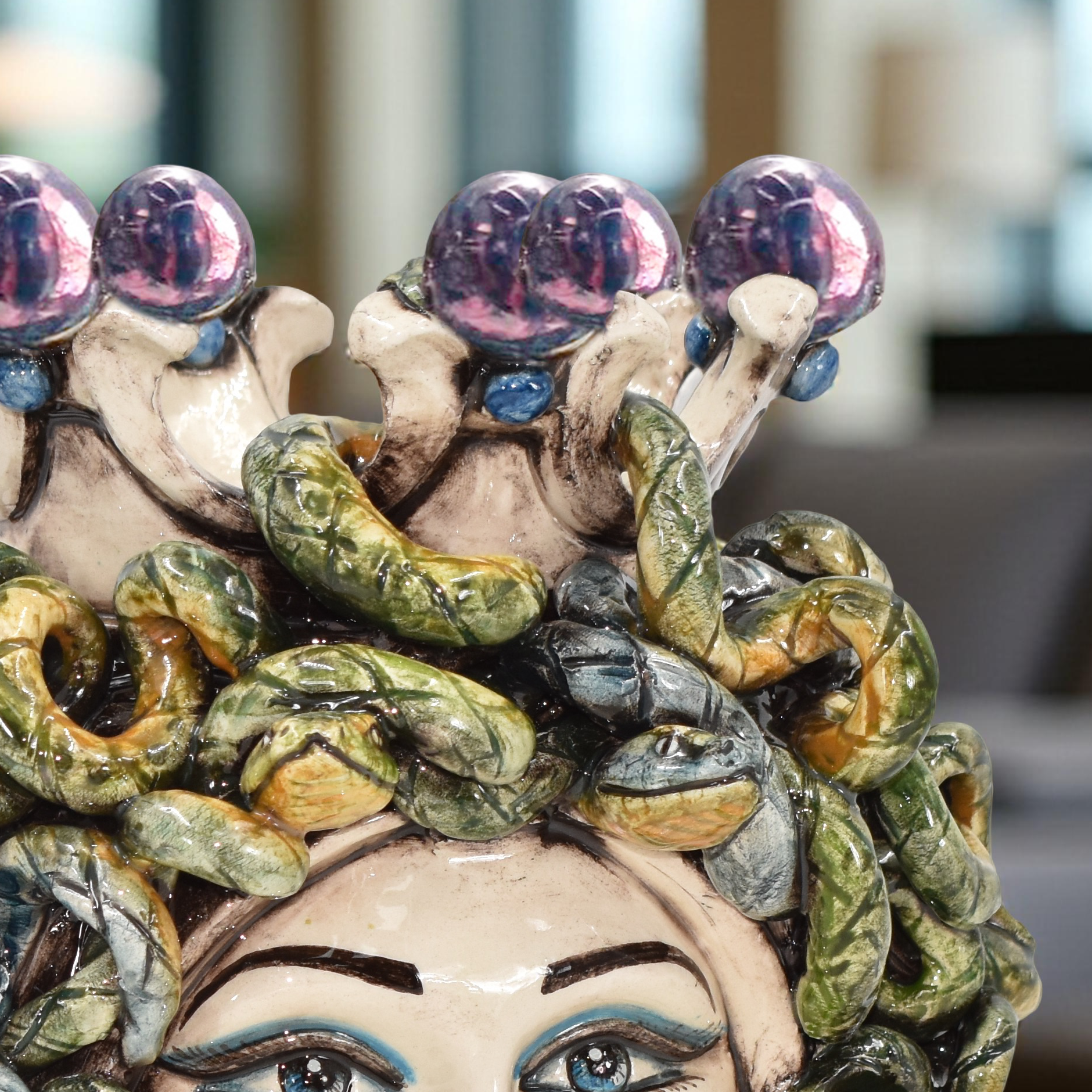

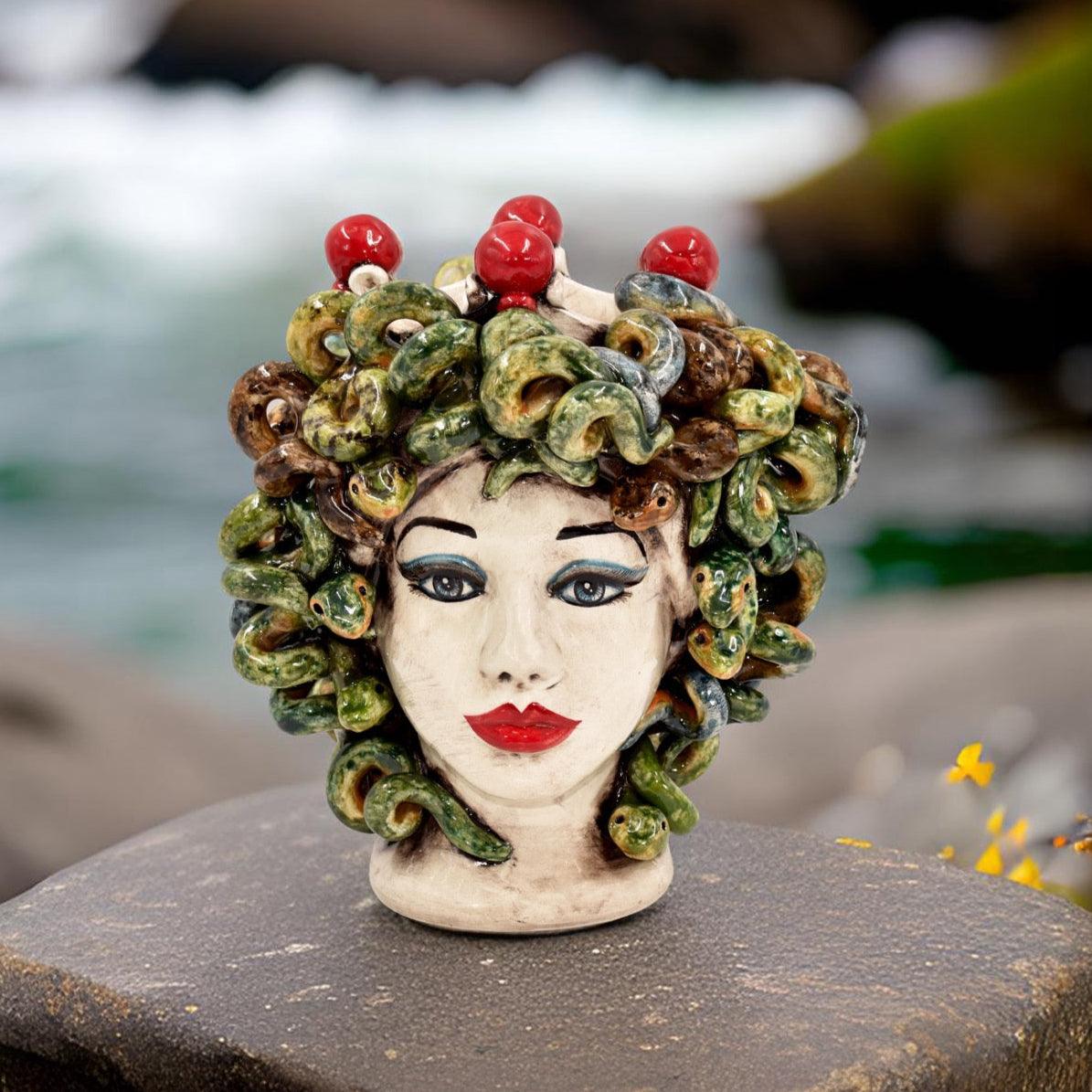
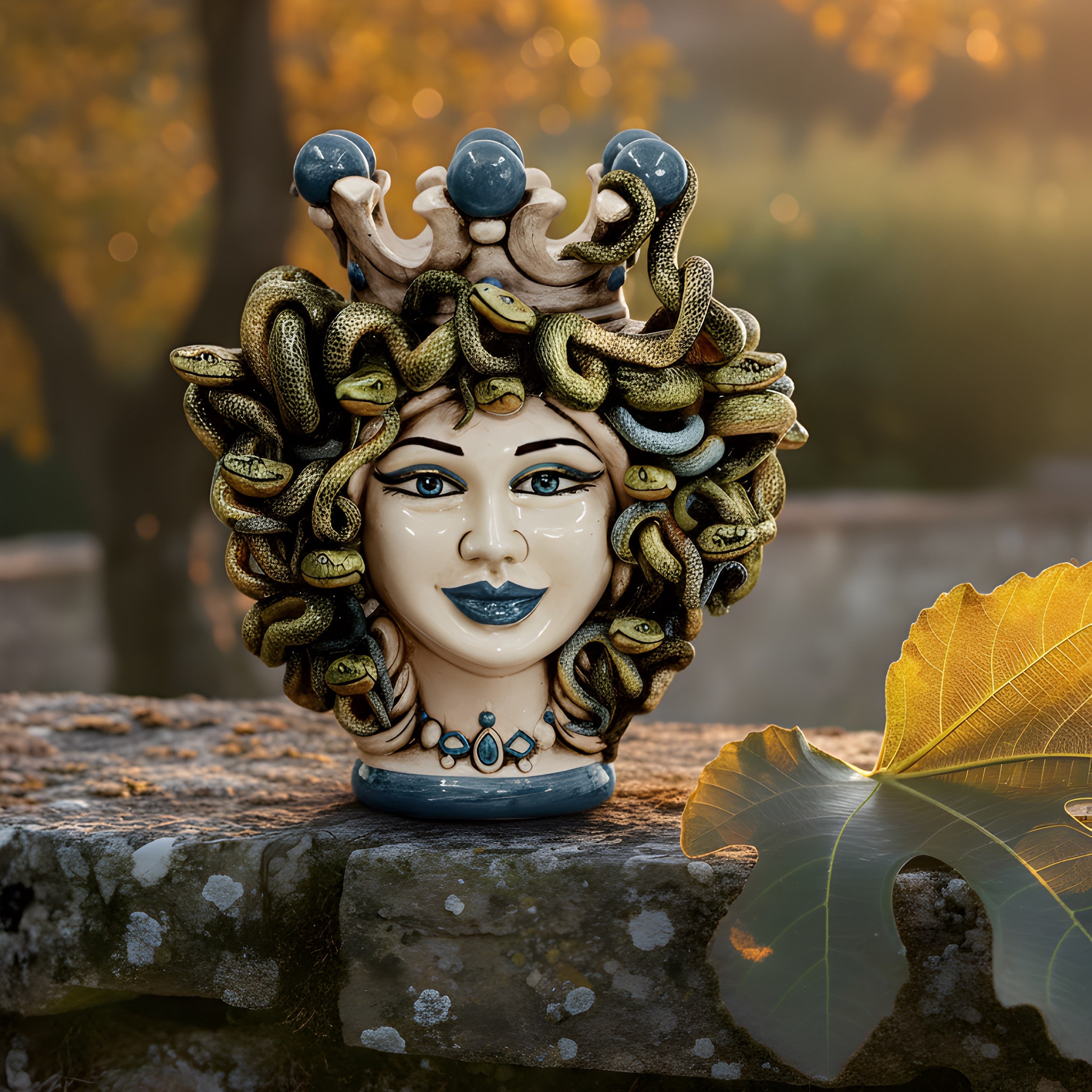
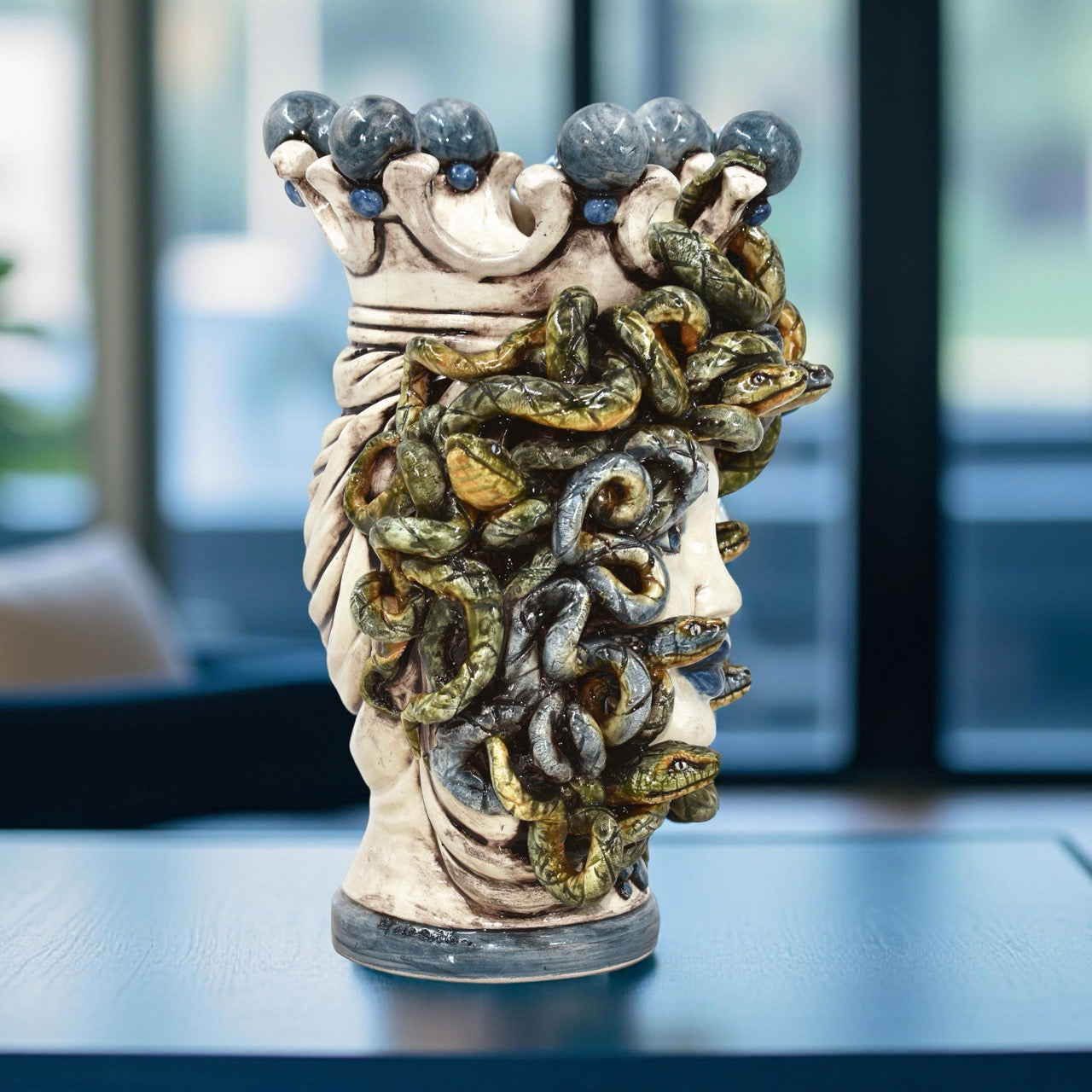
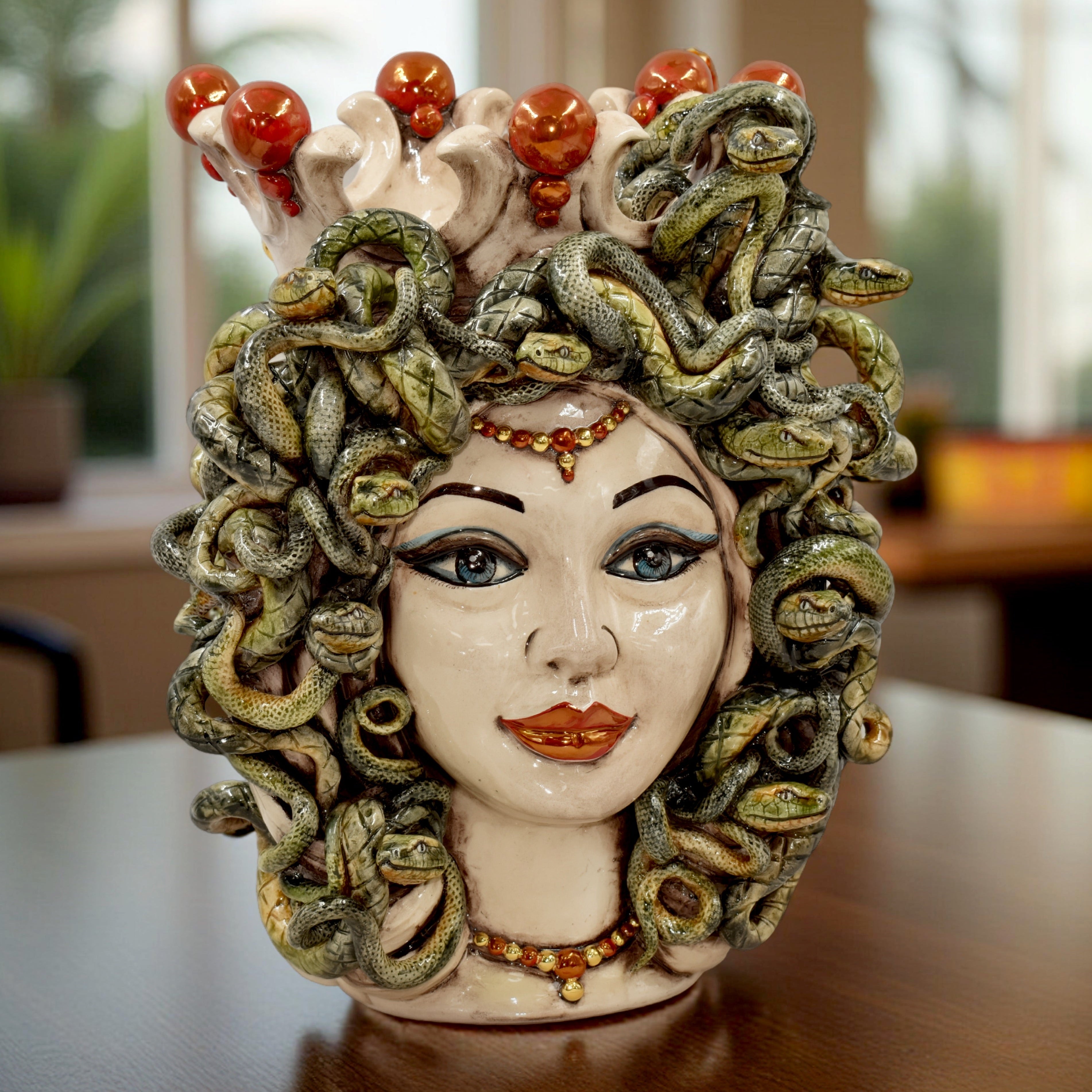

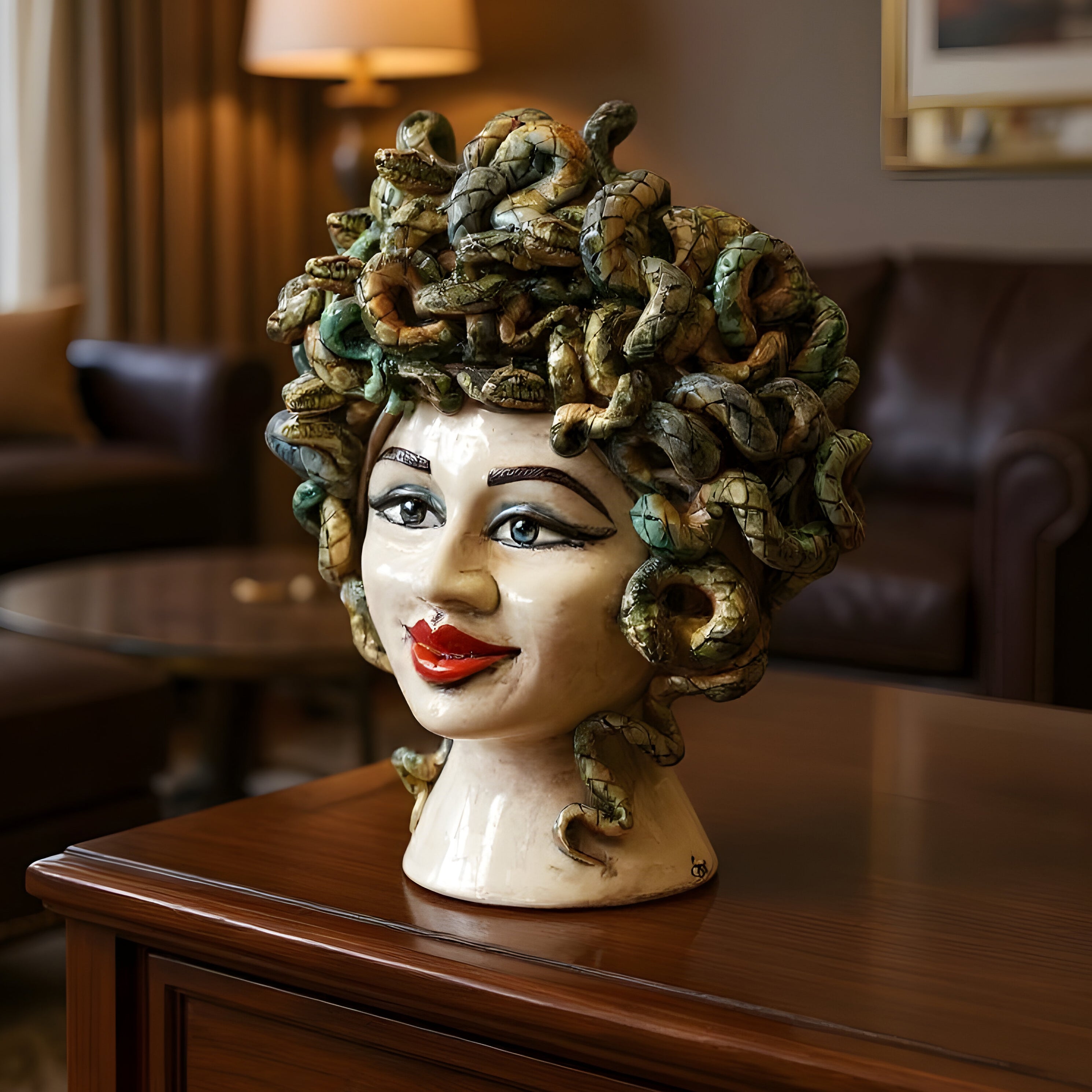
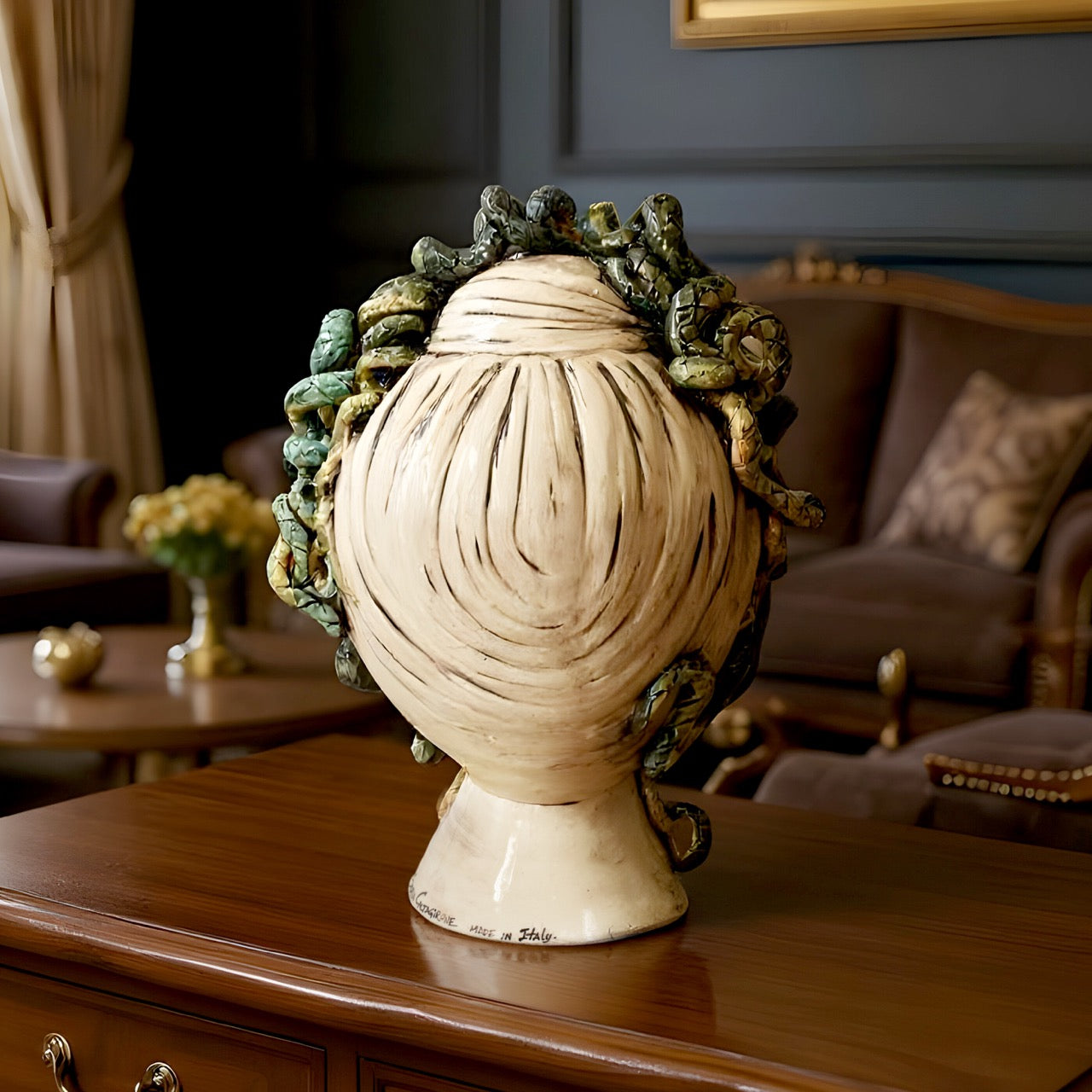


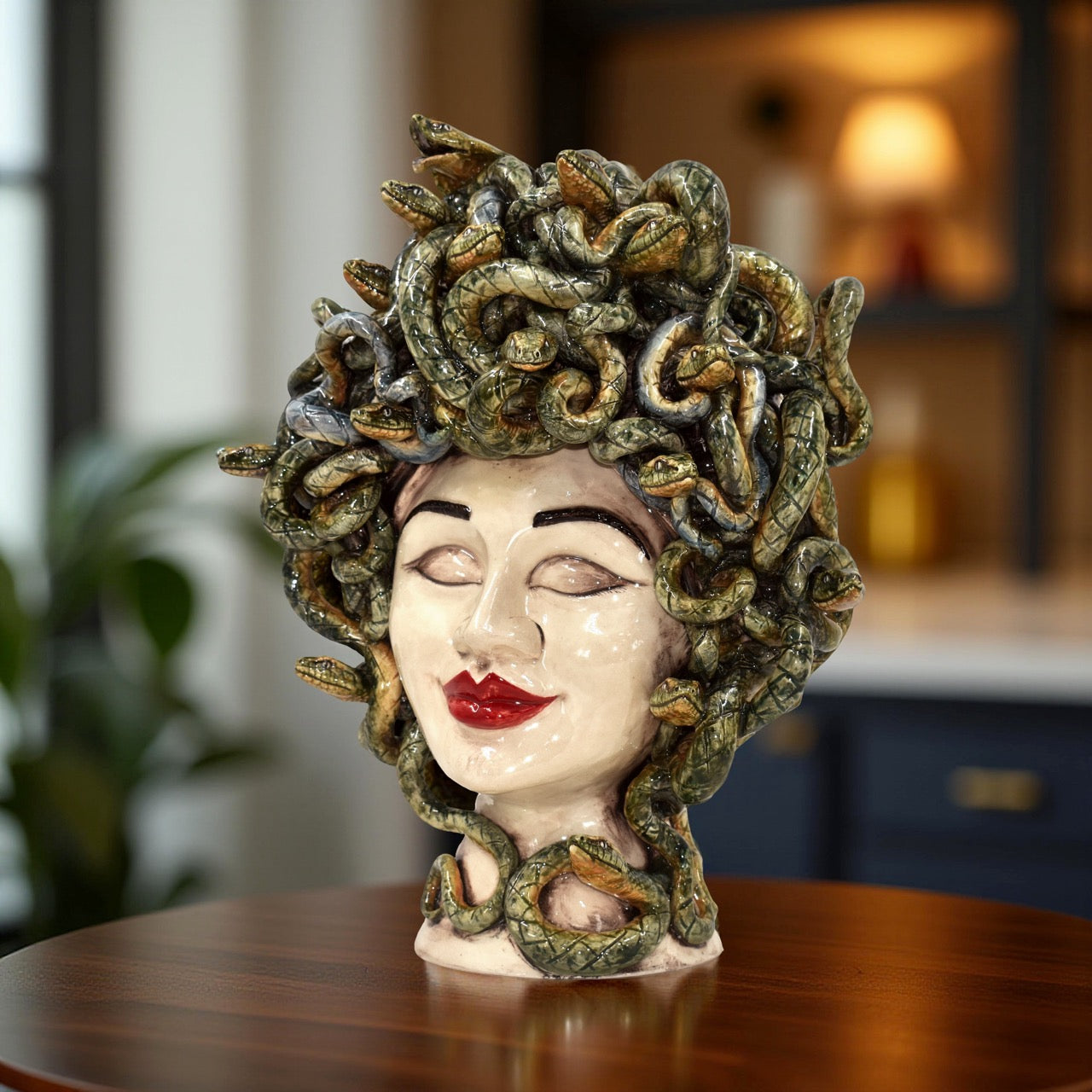

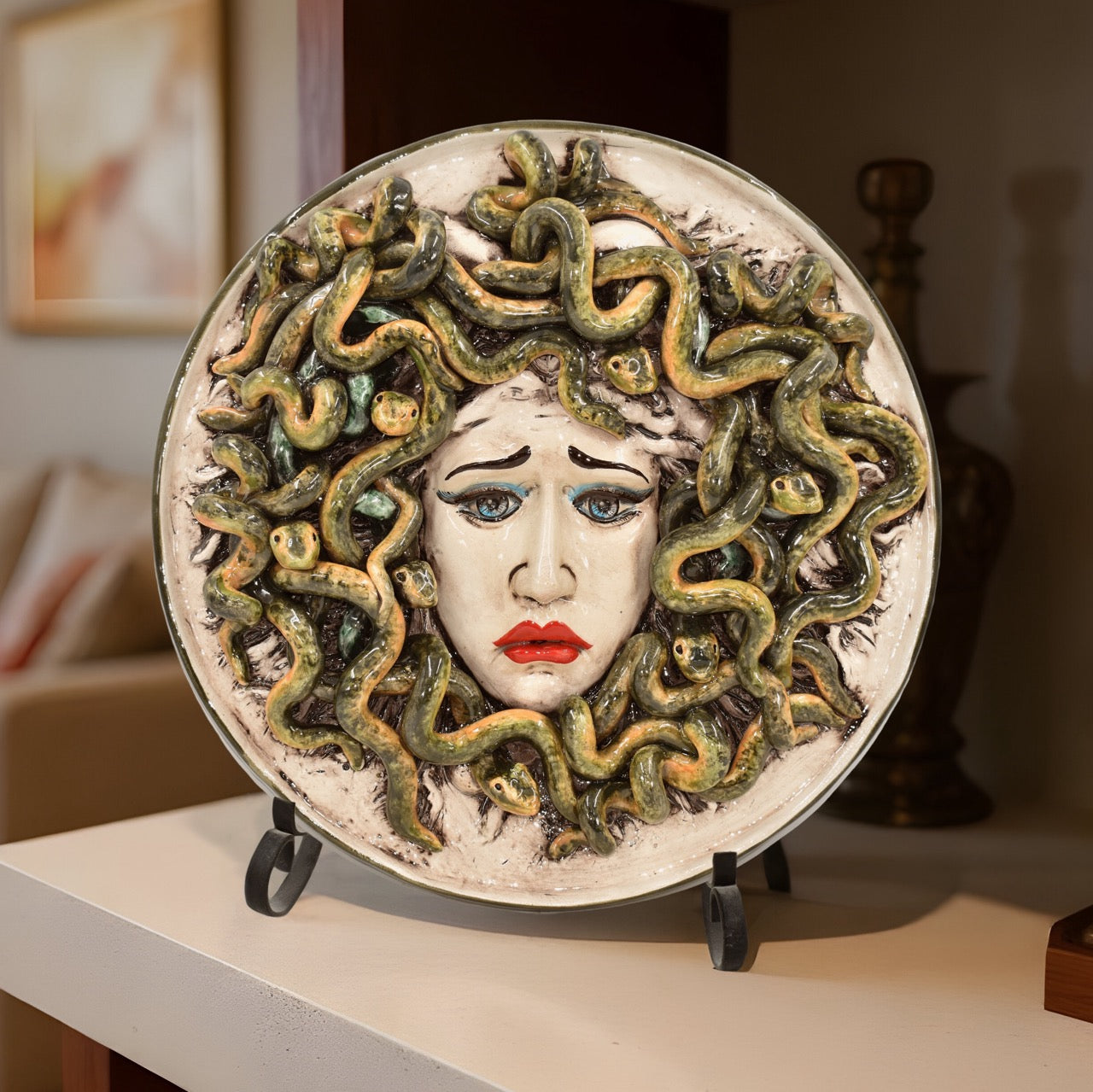
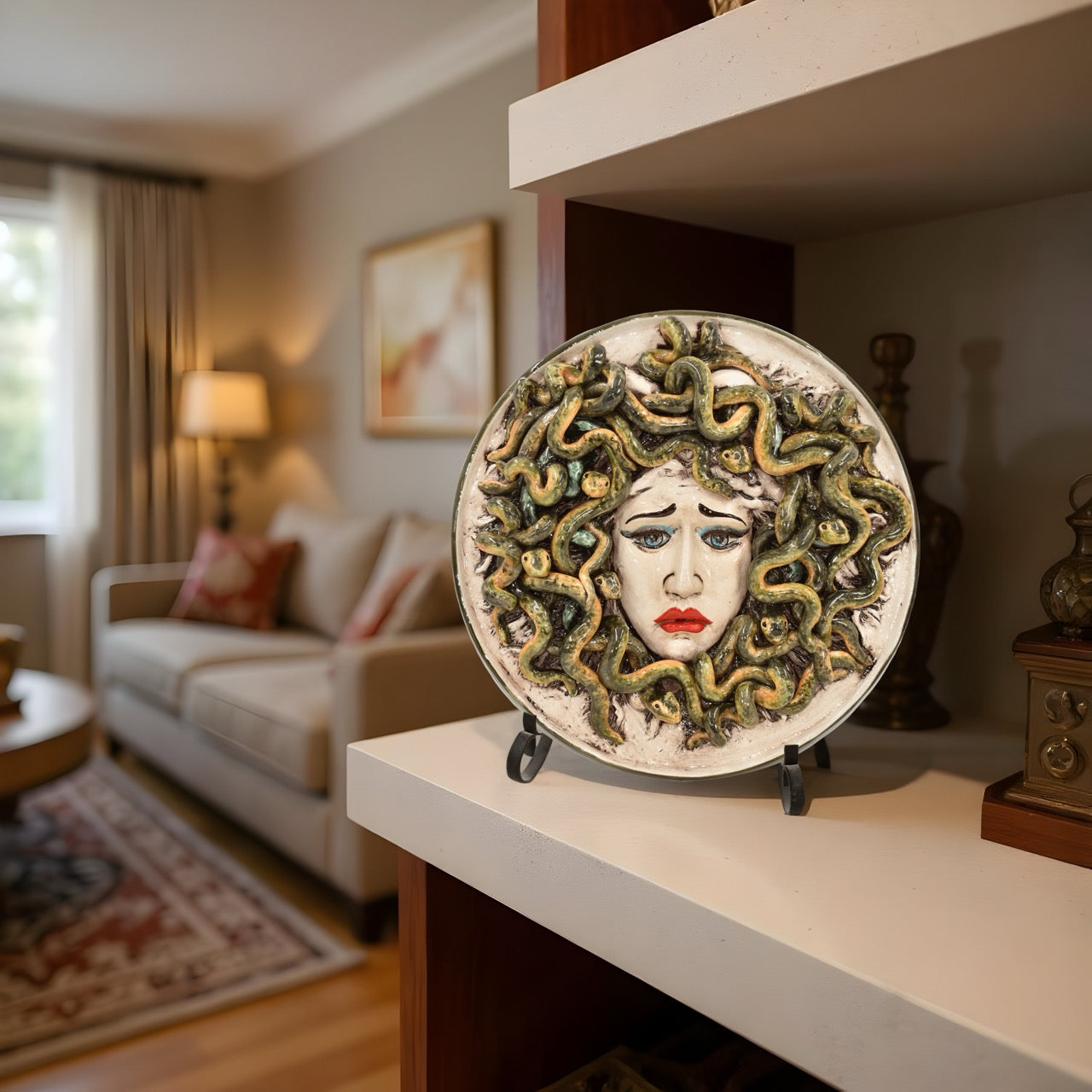
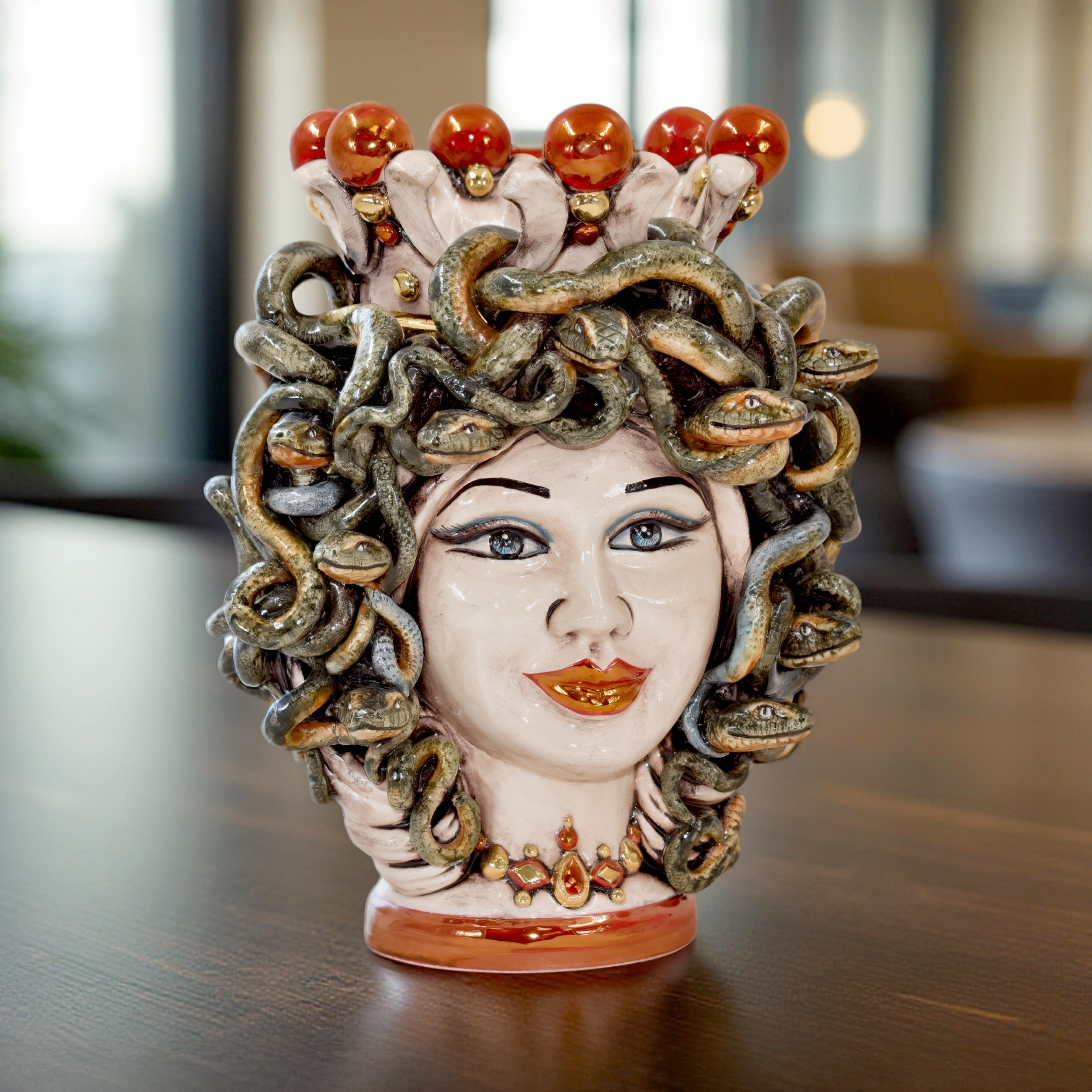
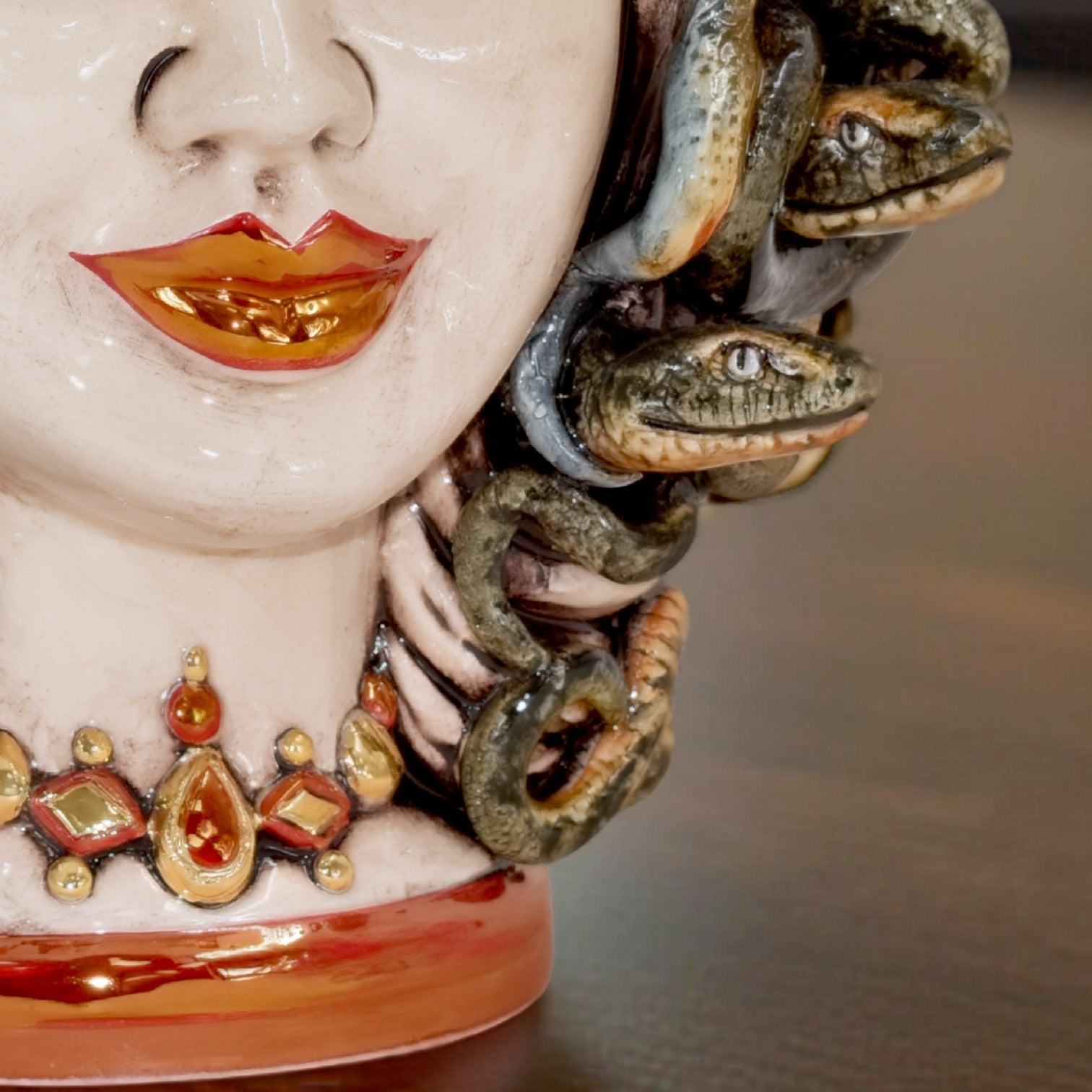
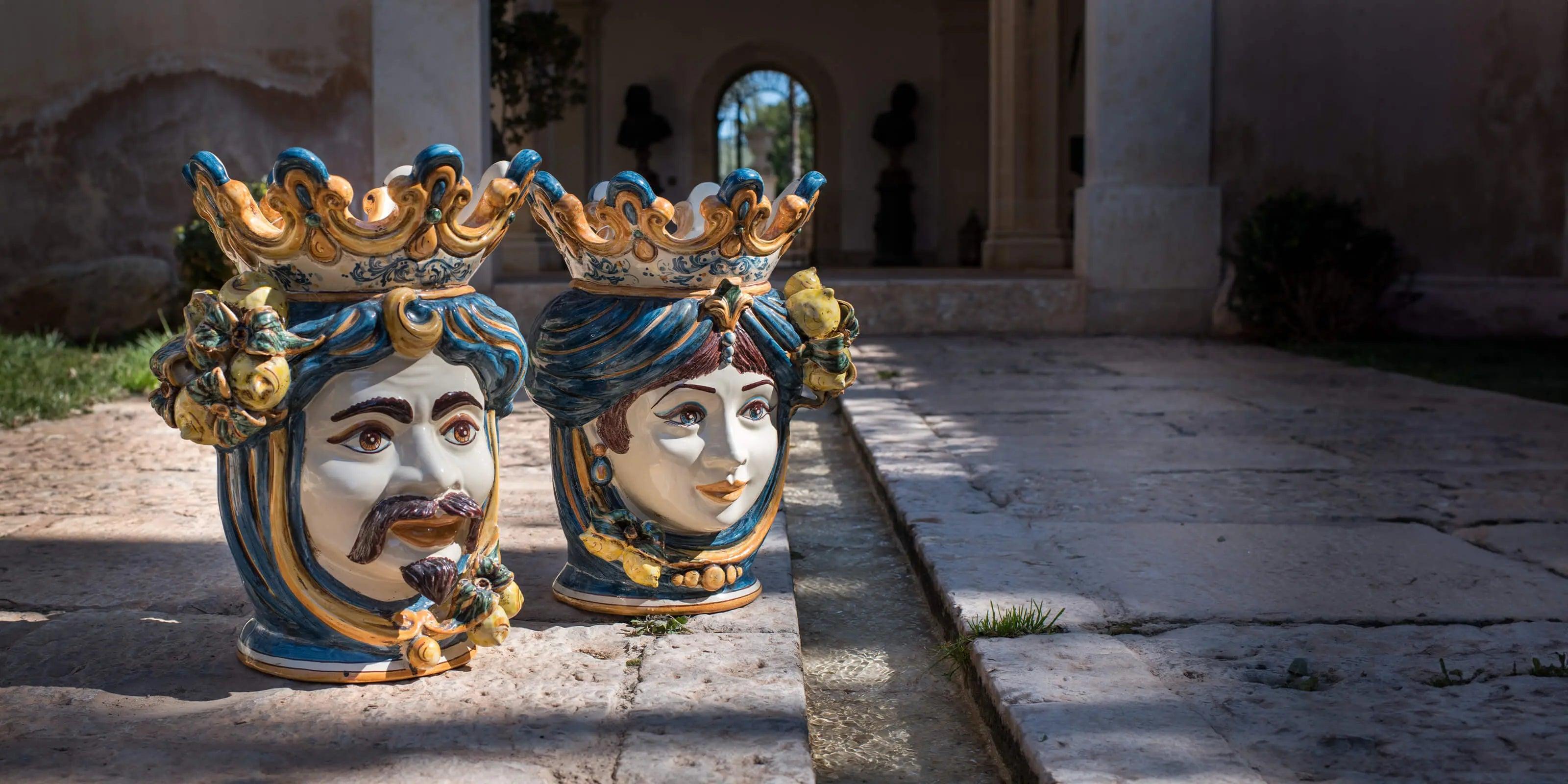
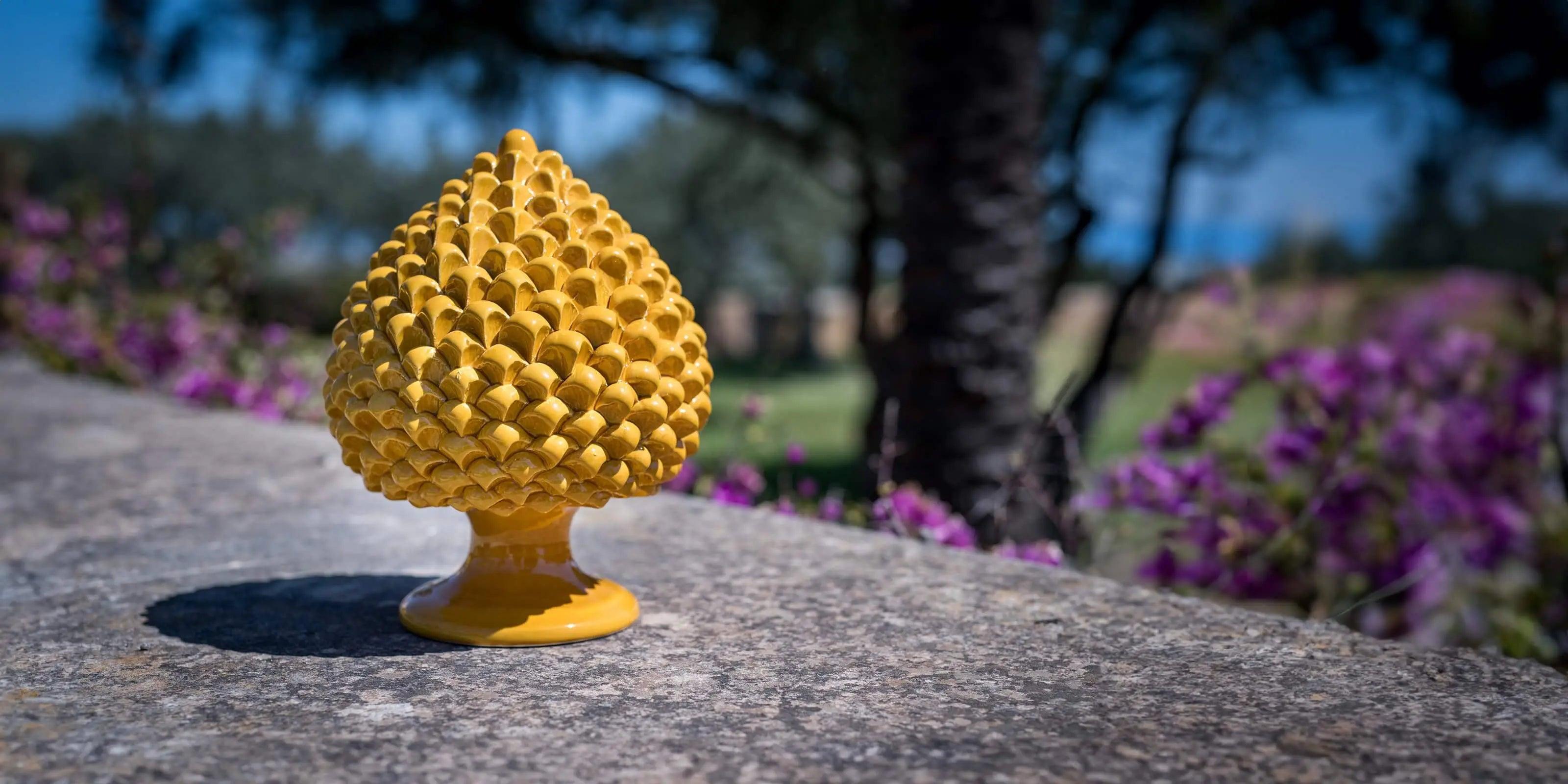
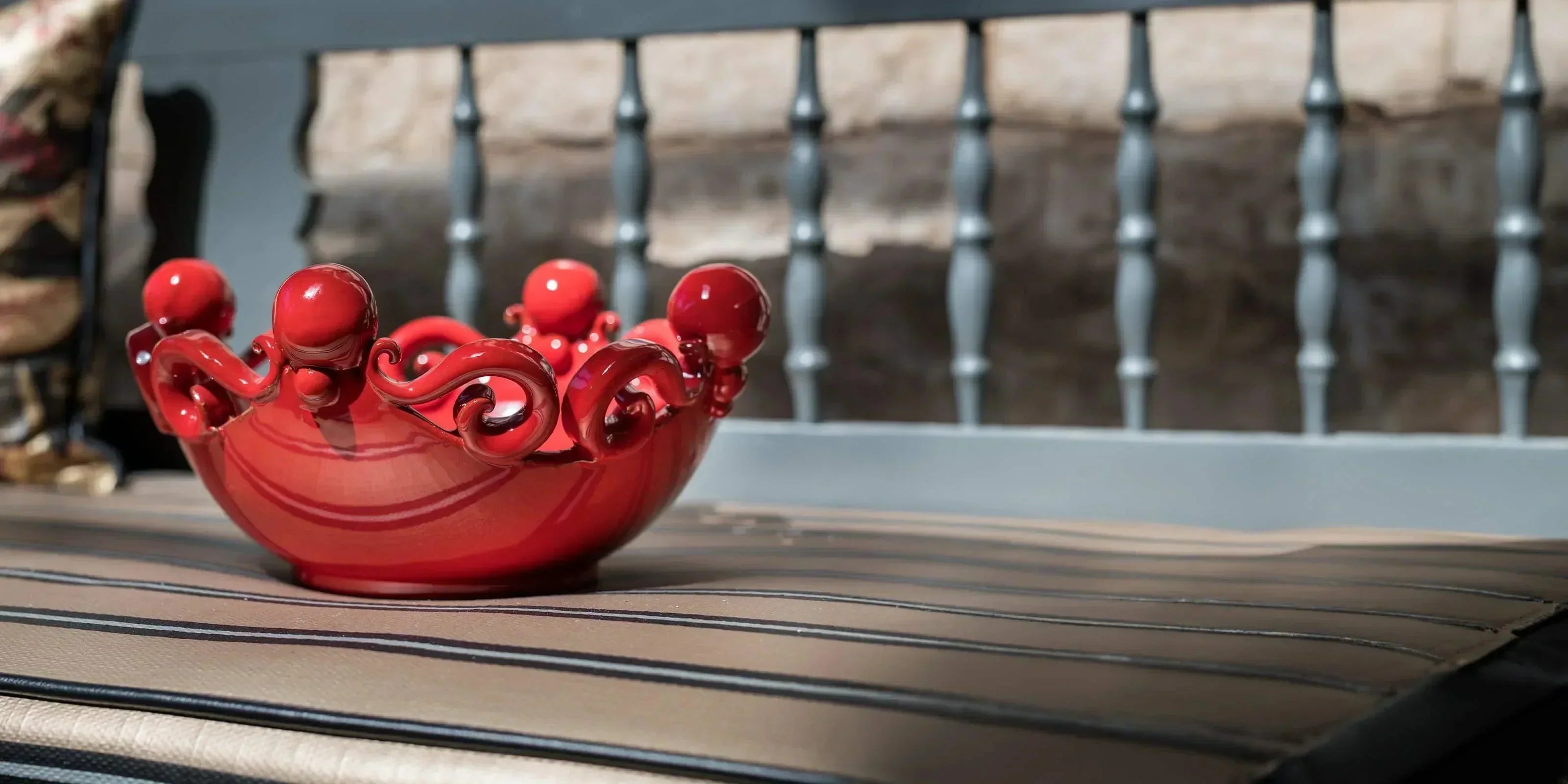

Leave a comment
All comments are moderated before being published.
This site is protected by hCaptcha and the hCaptcha Privacy Policy and Terms of Service apply.